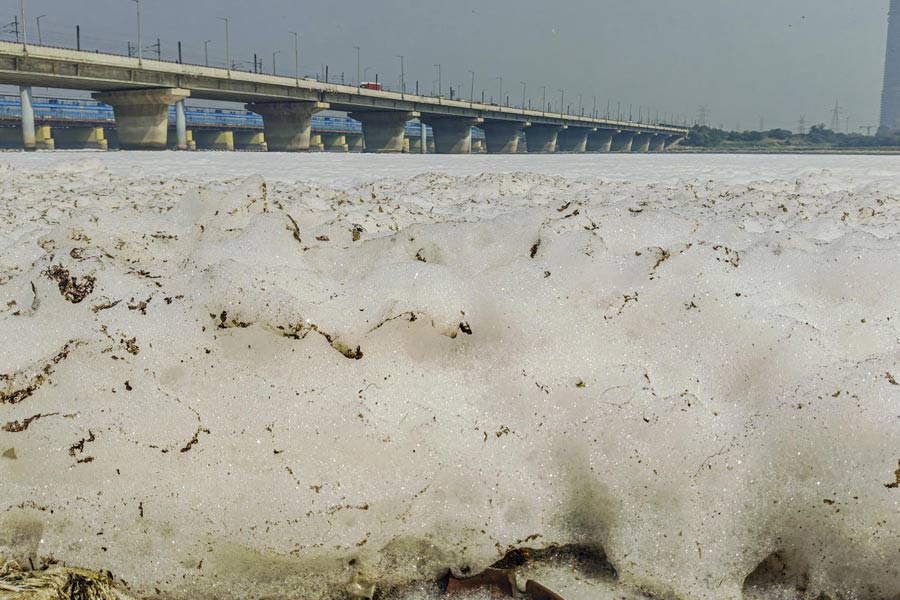The Yamuna river in Delhi was seen covered with a thick layer of white froth on Friday with experts saying this poses health hazards for people especially as the festive season approaches. Multiple videos circulating on social media show vast sections of the river frothing, resembling clouds over the water, which gradually dissipated later in the day.
Bhim Singh Rawat, Associate Coordinator of the South Asia Network on Dams, Rivers & People (SANDRP), told PTI, “Normally, the upper segment of the Yamuna experiences significant flood spells, but this year, there have been none during the just-concluded southwest monsoon of 2024." "This is unusual, as the river generally witnesses at least a couple of low or medium flood spells in this segment every year,” Rawat said.
He highlighted that the pollution in the river is a serious concern affecting human health and wildlife near the river.
While the river has some natural cleansing ability, pollution levels are alarming, he said, adding that the white froth which was seen during the monsoon this year, becomes more noticeable during festival times.
Experts have urged the government to address the pollution levels in the Yamuna, especially as major festivals like Chhath Puja are approaching.
The pungent foam contains high levels of ammonia and phosphates, posing serious health risks, including respiratory and skin problems, according to environmental experts.
“This kind of foam formation is common when fats from decaying plants and pollutants mix with the water, but its presence during the monsoon is surprising,” said another expert attributing the frothing to the absence of flood spells that typically wash away pollutants.
Except for the headline, this story has not been edited by The Telegraph Online staff and has been published from a syndicated feed.










